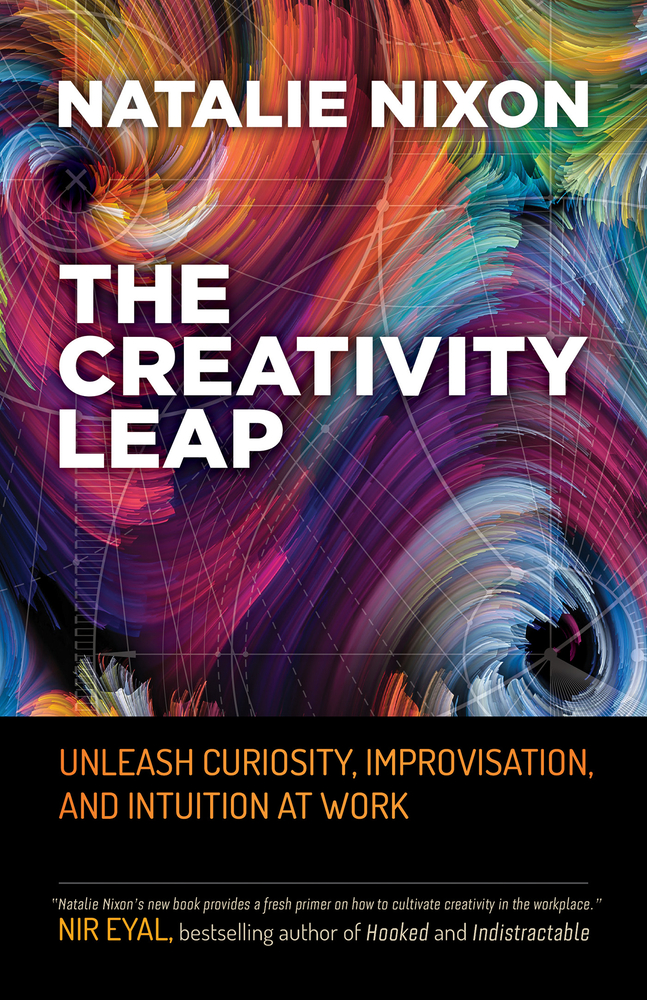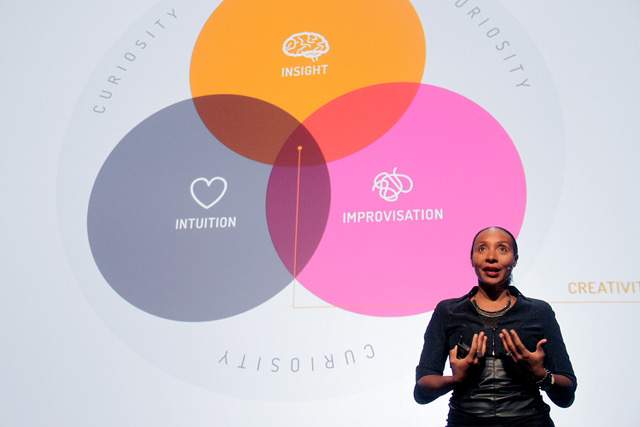The fundamental insights in Natalie Nixon’s book “The Creativity Leap”

Creativity emerges from the interplay of wonder and rigor.
That is the central message of The Creativity Leap, a fantastic little book by Natalie Nixon. She taps into a background in cultural anthropology and fashion to create a book that struck me as somehow fundamental, connected to the core of what it means to be human. To be human is to create. It is what makes our souls sing. This is a book about innovation, but it doesn’t stop there — if you are an entrepreneur, an artist, an engineer, a writer, even an accountant, you’ll find ways to benefit from the insights in this book.
(Buy it here on bookshop.org).
Even though The Creativity Leap is only 150 paperback pages, I found myself dogearing about half of them. Every few pages there was a truth that resonated with me. At the center of all of it is Natalie’s thesis about what creativity is and where it comes from:
Creativity is a Competency
Wonder is our capacity to exercise awe, pause, dream, and ask audacious blue-sky-thinking questions. Rigor is our capacity to exercise discipline and deep skills, to pay attention to detail, and to spend time on task for mastery. Both are necessary for creativity to thrive. In fact, I define creativity as the as the ability to toggle between wonder and rigor in order to solve problems and deliver novel value.
Reading this, I felt as if she had observed me for the last 60 years and said “Let me just write down how Josh thinks.” I was trained in rigorous thinking: as a mathematician. I feel that the adherence to rigor, to data, to logic, is central to the creation of anything worth doing. And yet, the heart yearns to embrace something larger than itself, to run free, to . . . well, put simply, to play. Without the rigor, all you’re doing is playing around. Without the wonder, you’re a drudge, following rules and plowing the same furrow over and over. New things worth doing emerge from both the wonder and the rigor, from, as Natalie says, toggling between the two to solve problems. And everybody solves problems. (My wife is an artist, and she solves problems and taps rigor every day in her quest to be creative.)

Inquiry, Improvisation, and Intuition
The Creativity Leap builds on a three-faceted model of creativity at work: inquiry, improvisation, and intuition. All will get you further in your thinking.
The key to inquiry is to ask better questions. Fact questions are just the beginning — since there is Google, those answers are usually close at hand, and can be dead ends. But, “a culture of inquiry requires . . . sitting with ambiguity . . . . This is difficult, because society is biased toward the rational. . . . The messy, open-ended nature of inquiry is disorienting, and asking better questions obligates us to move away from an obsession with finding a single, clear solution toward falling in love with problems and the process.” It is, as Natalie describes, “The messy process of moving from Why to How.”
Improvisation has become a fashionable mode for companies to embrace. (Even before the pandemic, I have this suspicion that improv performers made more money from teaching corporate types in improv thinking than they did from performing for audiences.) But improvisation is so much more than “Yes, and . . . ” Natalie cites the team at the popular LA Restaurant République, which embraces being hyperpresent in interactions, valuing the outlier, and designing fluid structures. Improv thrives on the flow of interaction between chaos and order, and anyone who has experienced peak creativity knows that such a flow is part of the experience.
Intuition is hard to write about, but Natalie still has a lot to say about it. She talks about what the military calls “VUCA” challenges: volatile, uncertain, complex, and ambiguous (like, say, a war in Afghanistan). These are “wicked” problems. “A wicked problem is one that requires abductive reasoning, whereby you start with a set of information and try to get to logical, plausible (but not definitive) explanations for observations. In the abductive process, you have incomplete puzzle pieces — they could be a combination of quantitative data points as well as observations — and then you reach the likeliest conclusion. Physicians do this with diagnoses [for example].” In such problems, there are gaps. Intuition fills those gaps.
Fashion thinking
One of my favorite parts of The Creativity Leap is a section on “fashion thinking.” I’m definitely prejudiced when it comes to fashion — it has always seemed silly and irrelevant to me. But as Natalie explains, the fashion industry has a unique advantage, ironically because everything new gets knocked off so quickly; that demands constant innovation, but within the constraints of what it’s actually possible to manufacture. Based on what she learned, Natalie teamed with Johanna Blakely, director of the Norman Lear Center the Annenberg School, and Valerie Jacobs, chief insight and innovation officer of the agency LPK, to create a fashion thinking rubric based on these principles:
- Style. Make an attractive and recognizable impression.
- Built for speed. Generate innovations and bring them to market quickly.
- Trends. Identify new patterns and lean into them.
- Storytelling. Build experiences that tell a story to the customer.
- Two-way engagement. Connect with and learn from customers.
- Remix and connect. Seek innovators in adjacent fields and collaborate.
- Open-source sharing. Find ways to tap into the ideas of the crowd.
This is a remarkably different way to look at the world. It’s not right for all companies — but if your company is in a fast-moving space, there is a lot to learn from this approach.
The Creativity Leap is filled with examples from art, from business, from nonprofits and schools and every imaginable kind of organization. That makes it more likely that it has something more relevant to say to you.
Are you creative? Yes.
Perhaps the most important insight in The Creativity Leap is that creativity lies within each of us, regardless of whether we think we are creative or not. As Natalie says, “I never felt comfortable choosing sides by self-identifying as ‘more analytical’ or ‘more creative.’ In fact, I now know that that a spectrum bounded by these two variables is totally off course.”
If you solve problems, this book is for you. I know from experience that every human is capable of generating insights that make the rest of us say “Wow, I never would have thought of that.” Reading The Creativity Leap is the way to give yourself permission to do that.